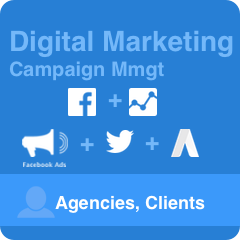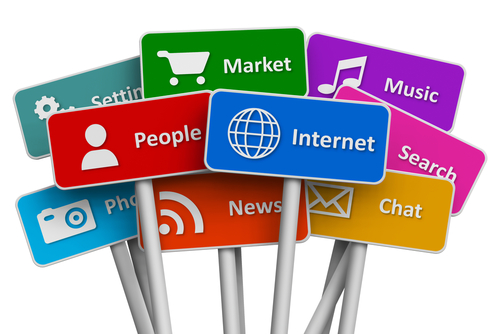Experience is the most fundamental business differentiator and nothing creates a better digital experience than a website that understands your needs and speaks to you 1 on 1. Think about it – you don’t strike the same conversation with every prospect that you meet in person. Why would you then offer a static, generic website that offers the same content, recommendations and experience, no matter who visits your website?
Most marketers have experimented successfully with personalized email marketing but website personalization, especially B2B personalization is still not the norm. A recent survey by DemandGen finds that 69% of B2B buyers rated relevant content that speaks to their company needs as the most important factor when visiting websites to research vendorrs. Personalization tools exist, in plenty, but about 50% of marketers in a recent survey conducted by Marketo indicate that they are still at the learning stage when it comes to personalization, and less than a third indicated that they are at an advanced stage of implementing personalization.
Why does the full potential of personalization remain untapped? Part of the problem lies in a lack of clear understanding on what exactly is website personalization; what value adds it can bring to a B2B business; and what solutions exist in the market.
What is Web Personalization?
Web Personalization occurs when a site utilizes customer data – geographic location, customer behavioral data, and demographics – to present content and experience that is specific to each individual visitor’s needs. In other words, personalization is a the dynamic and real-time delivery of a site to meet the unique needs of individual visitors and guide them through a conversion funnel.
The process of personalization combines data collection, real-time customer segmentation and business decision rules OR machine learning that together provide a personalized and contextual experience to users. Effective personalization also includes testing visitor actions, drawing conclusions about campaign effectiveness and generating overview reports.
A deep & mature personalization solution that would provide web experiences unique to visitors would be based on one or more of the following three customer segmentation criteria:
- Contextual – The site experience is personalized based on a visitor’s physical location, weather, time of day, or device they are using. One very common application of contextual personalization can be seen in multilingual versions of global enterprise websites that dynamically display the site in the language of the user based on geo-location identifiers. Mobile search engines routinely put contextual display algorithms to use when they display search results based on your location.
- Behavioral – Personalization can also based on behavioral signals, such as onsite search inquiries, referral source of the visitor, including search terms that led to the visit, pages visite, page depth, time spent, exit pages and more. Behavioral targeting require more advanced data and targeting rules. Some common examples of behavioral targeting are those used by most e-tailers which use visitor search patterns of purchase history to make product recommendations.
- Demographic – Personalization can also be offered by dynamically delivering the experience (content, recommendations, and layouts) based on age group, profession, industry vertical, even business account.
Why Personalize
The biggest driver of personalization is that it can drive relevance at scale – When done right and backed by the right data and right processes, personalization can be scaled to drive relevant messages, offers and experiences to the most valuable segments. Personalization to be managed at scale requires persona development, buyers journey mapping and contextual data. Combining these personas, customer journey and contextual data can result in thousands of customer microsegments, which will then drive personalization rules, i.e. what to show whom. The rules can be set manually or it can be driven by machine learning and statistical analyses that are applied to visitor behavior to dynamically deliver personalized experiences.
Provide contextual experiences across devices – With the explosion of smart devices, including Internet of Things, personalization makes it possible to deliver the right content to the right user at the right time. Just like Amazon offers personalized product recommendations based on your prior search patterns and purchase history, mobile and IoT-based fitness apps, such as FitBit, are now able to capture consumer data points straight from the devices and provide personalized value-add services based on use patterns of the device, leading to much higher engagement and eventually higher sales.
Provide consistent experiences to the same site visitor – Personalized technology is based on the premise that visitors can be uniquely identified, whether they are anonymous or known. Once a visitor has been assigned a unique identifier, data on that visitor’s browsing behavior, sessions, and events are available and can be used to deliver consistent experience that helps keep that visitor in the sales funnel. Personalized B2B websites can deliver consistent experiences based on your past search or browsing behavior and technological advancements now allow the ability to capture and unify data across devices and channels to create a uniform buyer profile and deliver consistent experience no matter which channel or device they use. More consistency drives more relevance and improved returns.
Drive customer action by offering personalized and contextualized content – Ever noticed, how B2B websites autofill their lead generation form on repeat visits? Or how online food delivery services automatically display your delivery address? Customers are more likely to take action (submit a pre-filled lead generation form or order food) if they are offered a personalized and contextualized experience, resulting in greater ROI. According to a Harvard Business Review article, personalization can deliver five to eight times the ROI on marketing spend, and can lift sales by 10% or more.
ABM-based Personalization
Special mention must be made regarding ABM-based personalization as it has deep value for B2B lead generation. Account Based Marketing or ABM has become the holy grail of B2B personalization and it makes a lot of sense for companies with well-defined accounts with very specific needs.
Reverse IP look up and CRM lead integrations can allow customer segmentation by named accounts and targeting rules or AI-algorithms can then laser target each account with information that is personalized to product messaging and pricing.
Creating static account-specific partner pages is a not new phenomenon but being able to the dynamically serve account-specific experience can lead to significant boost sales. It does so serving very specific needs of accounts and driving visitors lower into the funnel, thereby improving sales.
Many enterprise-level B2B websites now rely on account-based marketing principles to personalize websites. A good example of account based personalization is Adobe which uses reverse IP lookup and CRM identifier checks to find industry vertical, account size and even company name of visitors to personalize content.
Questions To Ask To See If You Qualify to Benefit from Personalization:
Before you dive into making your website personalized, use the questions below to assess if you are a good fit and stand to gain significantly from web personalization.
- Do you have several different kinds of visitor personas, accounts, or targeted verticals that would benefit from a personalized experience?
- Is your website well optimized and are you now looking to optimize the visitor’s journey?
- Do you need to personalize experiences for anonymous and identified visitors?
- Do you have a strong content development strategy that has mapped content assets to buyers purchase journey?
- Do you have a lot of existing content?
- Do you have the capability to capture website visitor data? Are you looking to capture omni-channel visitor data?
Industry Solutions That Drive Web Personalization
While hundreds of personalization & A/B testing tools exist in the market that allow you to personalize your website experience, we can differentiate key players based on market size focus (SMBs vs enterprise level), platform-based (CMS- specific vs not), integrations with data/analytics (yes vs no), experience delivery (target rule based vs adaptive AI-led) and vertical focus (B2B vs. B2C) .
SMBs could benefit from publisher personalization solutions from industry leaders such as Marketo, Hubspot, and Optimizely. Large enterprise level solutions include Adobe Target and IBM’s Watson Real Personalization that benefit from the native data analyticsintegrations. If you are looking to personalize your CMS-based website, large players including Sitecor, Episerver and Drupal-based Acquia Lift, offer CMS-specific solutions. Episerver prides itself in offering “no rules personalization: more intelligence, less work.” Acquia Lift also integrates machine learning for optimization of customer experiences. According to Acquia, “Lift uses machine learning to organize data, help customers build contextualized digital experiences, and more efficiently move consumers from discovery through purchase and beyond.”
Many personalization tools allow for target rule creation and machine learning-led algorithms to drive personalization of experiences. BrightInfo is a solution that relies heavily on AI to drive personalization.
I would be amiss to not mention the Google Optimize 360, an enterprise level A/B testing and personalization platform. Recently, Google announced that it would offer a free version to the public as well. It is important to bear in mind, though, that the free version does not allow native integrations with audience targeting in Google Analytics, but allows for some inbuilt targeting rules based on geography and user attributes..
Interested in how to personalize your web experience? HBR recommends starting with the 3 Ds: data discovery, decision rules and content distribution! Looking for experts who can guide you through the 3Ds? Contact personalization specialists at Webtage today to learn how we can personalize your web assets and your digital marketing campaigns!






